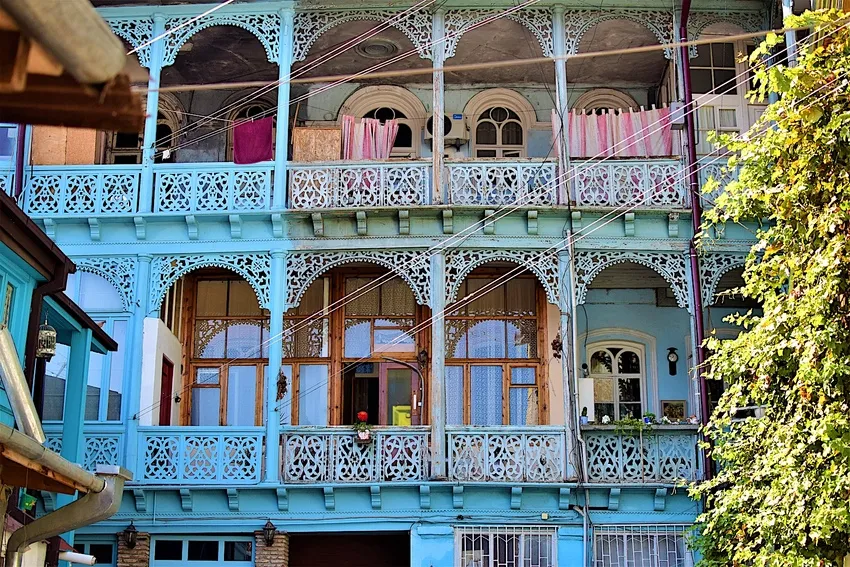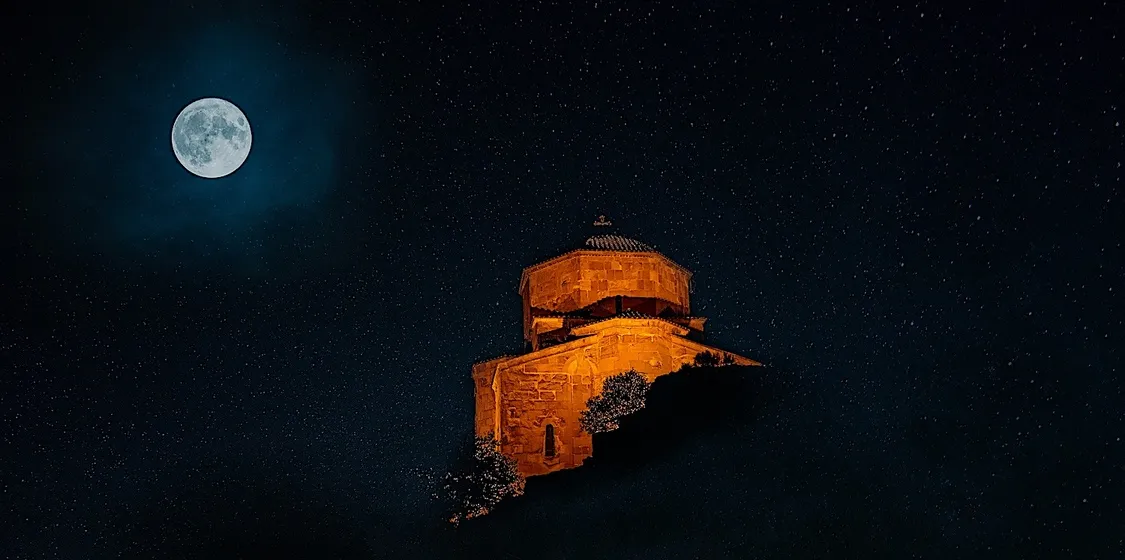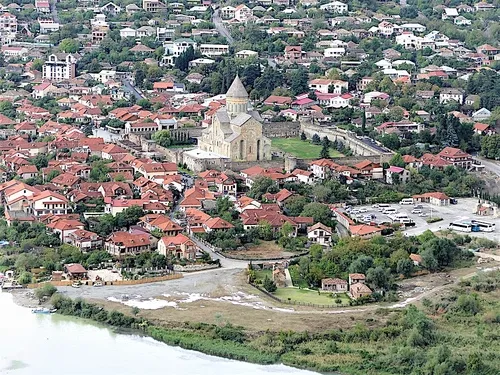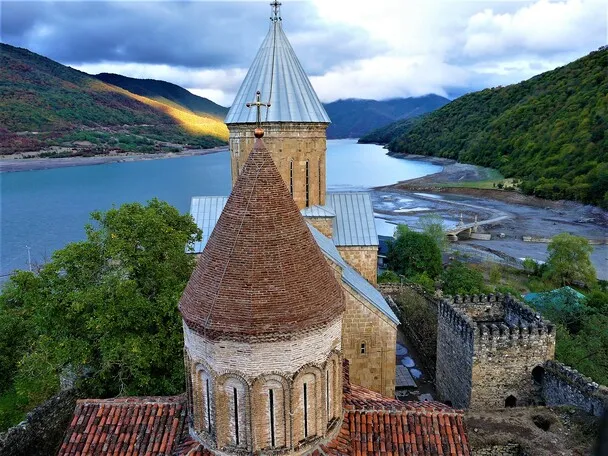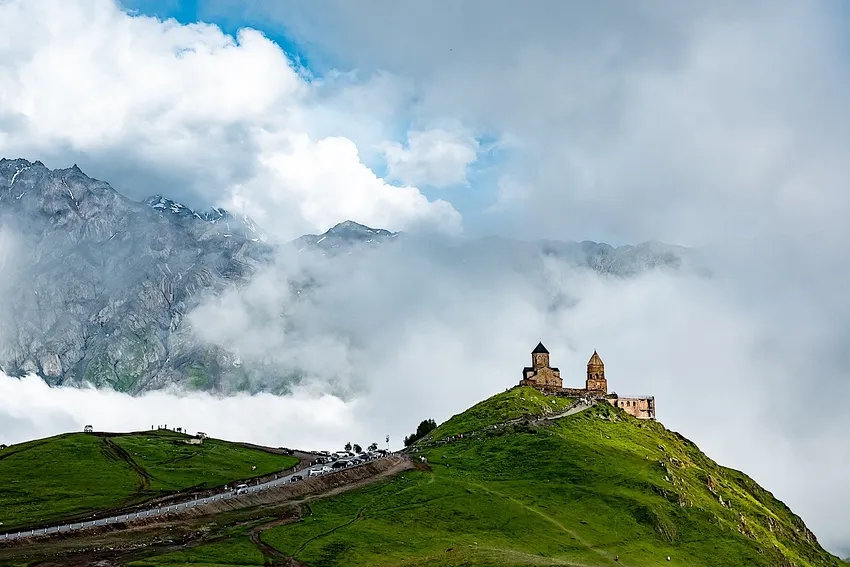-
Authentic Places
Bagrati Cathedral
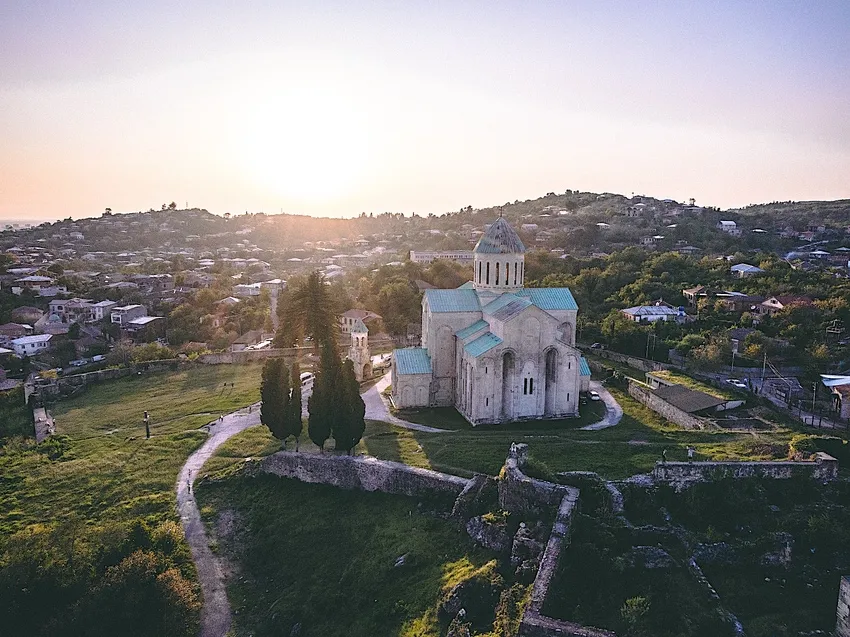
If you decide to travel to "the second most important city" and "the father city" of Georgia, as locals like to call Kutaisi, you will definitely appear in Bagrati Cathedral. Bagrati Cathedral has huge historical and cultural importance, and its location impresses every visitor. It is located on Ukimerioni Hill; therefore, it has beautiful views over the whole city of Kutaisi, over the mountain range of Racha, and over the Rioni River. Imagine the landscape together with the unique architecture of early medieval Georgia, and you will fall in love.
History
Located on Ukimerioni Hill, Bagrati Cathedral is the most important place of worship for locals. It was built in 1003, and it is a representation of the unity and power of the whole of Georgia. The reason for the following is a chaotic feudal story. In the 9th century, the situation in Georgia is... let’s say, not very good. The country is divided into rival feudal components, and they all fight to get more control over pieces of land. Meanwhile, there are three main forces in Georgia. One is Tao-Klarjeti, or the kingdom of Georgians, which takes power over the very weak central part of Georgia, or the dukedom of Kartli. In east Georgia, there is the episcopacy of Kakheti, and in west Georgia, there is the kingdom of Egris-Apkhazeti. They are all powerful kingdoms except the last mentioned one because, in the 10th century, it has a blind and powerless king whose name is Theodosius who loses control over the central part of Georgia to the eastern part of Georgia (Kakheti), and the people in the central part of Georgia are exhausted from all the feudal aggression and wars. We see one man who is a nobleman from the central part of Georgia—Kartli. His name is Jovan, and he decides to unite the country. He sees himself as a candidate for the unification plan. This is the future king and future builder of Bagrati Cathedral. This is a young prince named Bagrat, who is the nephew of Theodosius, whom we mentioned before. He is the grandchild of the ruler of the central part of Georgia, and he becomes the heir of David, king of the Tao-Klarjeti kingdom. With the help of King David Bagrat manages to become monarch of the three kingdoms and takes Kutaisi, where he builds this enormous cathedral in honor of the unity and power of the country, names it in honor of himself, and unites almost all of Georgia. After many years and many battles, he manages to take the kingdom of Kakheti under his control and complete the unification of the country. That’s how this piece of the feudal story ends. These times are long gone, and people are gone too, but some things stayed; they didn’t disappear. The most important thing that stayed with King Bagrat was our country. He was one of many warriors of Georgian unity, and the symbol of this unity, the cathedral of Bagrati, is still here. Despite all the attempts at its destruction, it still stands, and you can still hear services conducted in Georgian. This is why it is so important for locals, and this is why you should visit it.
Fortress of Kutaisi
Except for the main building of the cathedral in Bagrati, you can see the fort of Kutaisi. This is basically the ruins of the walls that you can see around the cathedral. The Fort of Kutaisi was one of the biggest strongholds in the western part of Georgia, and it was the main battlefield between Turks and Georgians in the 17th century. This was the time when the cathedral was damaged the most, when its dome and walls partially collapsed. In the 18th century, famous battles between Russian and Turkish armies happened here. Famous general Eduard Totleben from the Russian Empire was leading the wars against Turks here, and less famous but beloved king for all Georgians, King Solomon I, took very difficult decisions about the destruction of his own Kutaisi fort here in order not to let Turks take it again. So this is a place that saw everything—almost all the history of our country—and it is a symbol of not only unity but also the suffering that our country went through.
If you decide to explore further, you can discover much more in the vicinity of Kutaisi Fort. The ruins of a V-century church that was remade into a gunpowder-preserving space and the remnants of a mosque, which was purposefully destroyed by King Solomon, can be seen there. Ruins of the king's residences, king's wineries, and a secret tunnel—of course, a secret tunnel that was an undivided part of every fortification in Georgia in the Middle Ages, but this secret tunnel is from the 4th century and it has three different functions. One is leading to a place from where you can see and control basically all main roads and areas nearby; the second is escape; and the third is the water source. If you want to explore more secret places around Bagrati Cathedral or just want to see it, text us here.

